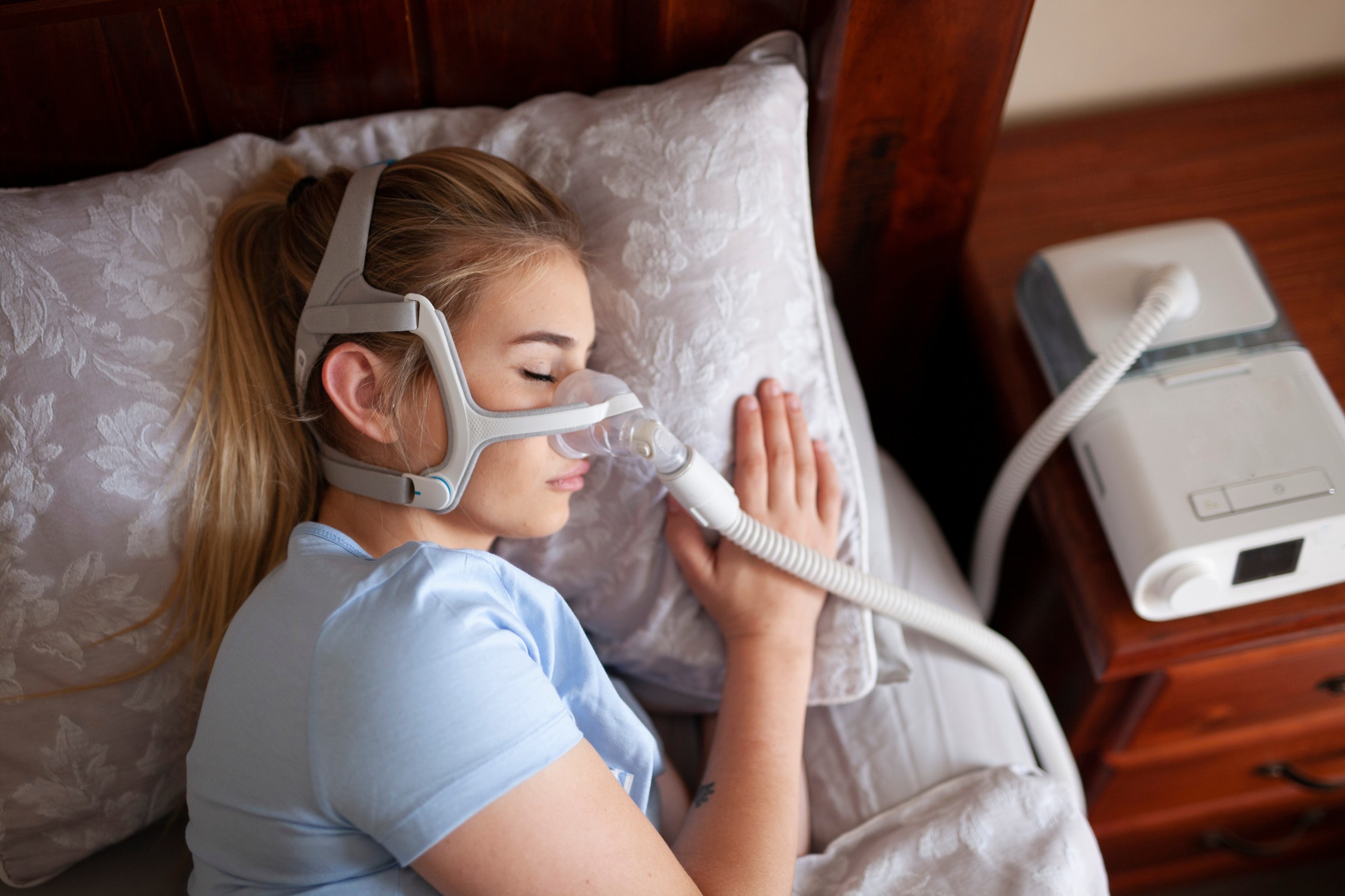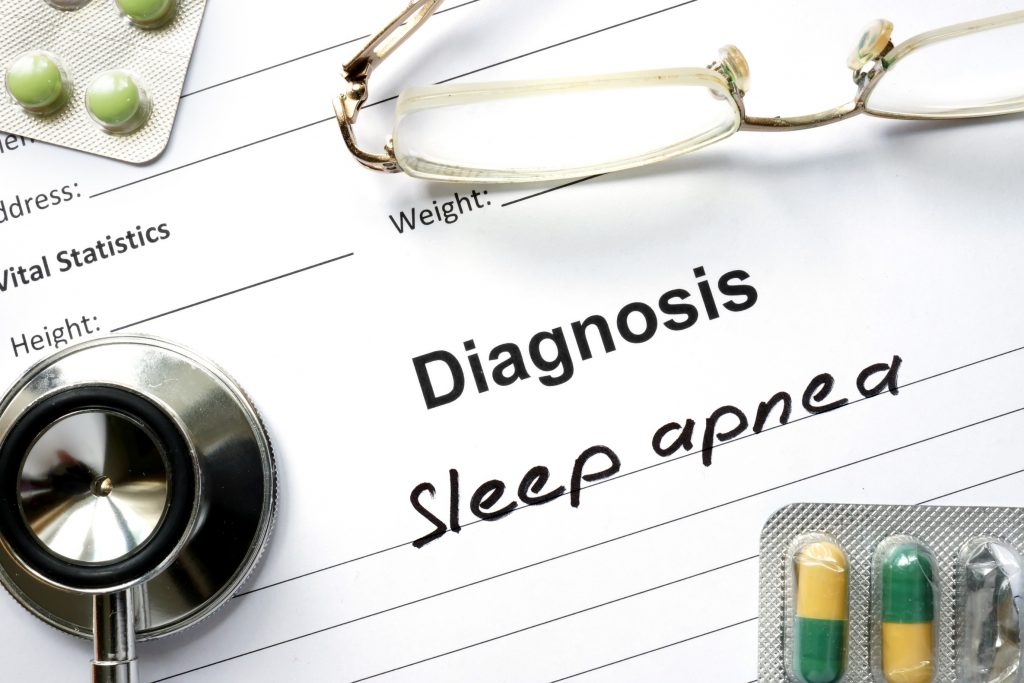How a Rainy Night and Beyoncé Kept DC Metro Running
August 9, 2023
In the captivating world of music and entertainment, artists wield a unique power that extends beyond the boundaries of the stage, leaving an indelible mark on the hearts and minds…

Sleep apnea is a disorder that affects millions of people across the world. It is characterized by pauses in breathing while sleeping, which can lead to inadequate oxygen levels and other health issues. It can be a difficult problem to diagnose and can have serious consequences if left untreated. In this article, we will explore the causes and treatments of sleep apnea, as well as the symptoms and types of this common sleep disorder.
Sleep apnea is a serious sleep disorder characterized by pauses in breathing during sleep. During these pauses or “apneic events”, the individual’s brain briefly arouses them from sleep to resume normal breathing, which results in poor sleep quality and a host of other health problems. There are two main types of sleep apnea: obstructive sleep apnea (OSA) and central sleep apnea (CSA). OSA is caused by a blockage of the airway, usually when the soft tissue in the back of the throat collapses during sleep. CSA is caused by a failure of the brain to signal the muscles to breathe due to instability in the respiratory control center. Sleep apnea is more common among men, people who are overweight, and those over the age of 40, though it can affect anyone at any age. Symptoms of sleep apnea include snoring, choking or gasping for air during sleep, daytime fatigue, restless sleep, and morning headaches. If left untreated, sleep apnea can increase the risk of high blood pressure, heart attack, stroke, diabetes, and other serious health issues.
There are three main types of sleep apnea: obstructive, central, and mixed. Obstructive sleep apnea (OSA) is the most common type and is caused by a blockage in the airway, usually due to poor muscle tone in the throat. Central sleep apnea (CSA) is caused by a problem with the brain’s ability to send signals to the muscles that control breathing. Mixed sleep apnea is a combination of both OSA and CSA.
Sleep apnea is a common sleep disorder characterized by pauses in breathing during sleep. It can lead to oxygen deprivation and other serious health issues, and is most commonly diagnosed in adults. While the exact cause of sleep apnea is unknown, there are several factors that can contribute to the condition.
Obesity is one of the most common causes of sleep apnea. People who are overweight are more likely to have sleep apnea due to additional fatty tissue in the throat and neck area, which can block the airway. Age is also a factor; sleep apnea is more common in older adults due to changes in the anatomy of the throat.
Smoking and alcohol consumption can also increase the risk of sleep apnea. Smoking irritates the airways, which can lead to a narrowing of the airway and increased risk of sleep apnea. Alcohol causes the muscles in the throat to relax, which can lead to an obstruction of the airway.
Genetics can also play a role in sleep apnea. Some people are born with a narrower throat or a thicker neck, which can increase the risk of sleep apnea. Other risk factors include menopause, allergies, and enlarged tonsils or adenoids.
It is important to talk to your doctor if you think you may have sleep apnea. Diagnosis is typically done through a sleep study, which involves overnight monitoring in a sleep lab. Treatment options include lifestyle changes such as weight loss, avoiding alcohol and smoking, and using a CPAP machine while sleeping. Surgery may also be recommended in some cases.

Sleep apnea is a medical condition where a person experiences pauses in breathing or shallow breaths while they are asleep. These pauses can last from a few seconds to a few minutes, and they can occur multiple times throughout the night. This can lead to serious health problems and a decrease in quality of life.
One of the most common symptoms of sleep apnea is loud snoring. The pauses in breathing can cause the airway to become blocked, leading to loud snoring. This can be disruptive to sleep and can also be a warning sign that something is wrong.
Another symptom of sleep apnea is episodes of stopped breathing while asleep. These episodes can be noticed by another person, as the person with sleep apnea may have pauses in their breathing pattern. These episodes are typically followed by the person gasping for air, which can be quite loud.
Other symptoms of sleep apnea include awakening with a dry mouth, morning headaches, difficulty staying asleep (insomnia), and excessive daytime sleepiness (hypersomnia). All of these symptoms can have a negative impact on a person’s quality of life, as they can make it difficult to function during the day.
Diagnosis of sleep apnea is typically done in two ways: nocturnal polysomnography and home sleep tests.
PSG is a diagnostic test for sleep apnea and involves monitoring multiple physiological parameters during sleep. A patient undergoing a PSG will typically have electrodes placed on their scalp, face, and chest, which measure brain activity, eye movement, and muscle activity and are used to determine the stage of sleep. A patient will also wear two belts around their chest and abdomen, which measure the depth and rate of breathing. Additionally, a microphone is placed near the patient’s mouth and nose to measure snoring and apneas. PSG is considered the gold standard for diagnosing sleep apnea and has been shown to be highly sensitive and specific.
HSTs are an alternative to PSG for diagnosing sleep apnea. This test typically involves wearing a monitoring device for one night, which measures oxygen levels, breathing, and snoring. These tests are typically less expensive and more convenient than PSG and can be used to diagnose mild to moderate sleep apnea. However, they are not as accurate as PSG and may underestimate the severity of apnea in some cases.
Treatment of sleep apnea can vary depending on the type and severity of the disorder. Obstructive sleep apnea is often treated with lifestyle modifications, such as losing weight, avoiding alcohol and smoking, and sleeping on your side instead of your back. If these treatments are not effective, a doctor may recommend the use of a continuous positive airway pressure (CPAP) machine, which delivers a steady stream of air pressure to keep the airway open.
For central sleep apnea, lifestyle modifications may also be recommended, such as avoiding alcohol and certain medications. If these are not effective, a doctor may prescribe medications to help regulate breathing during sleep. Other treatments may include the use of a Bi PAP machine, which is similar to a CPAP machine but delivers two levels of air pressure, or an adaptive servo-ventilation (ASV) machine, which adjusts the air pressure throughout the night.
Surgery may also be recommended in some cases, such as a tonsillectomy or removal of the adenoids and/or uvulopalatopharyngoplasty (UPPP), which surgically removes excess tissue in the back of the throat that may be blocking the airway. Other surgeries, such as maxillomandibular advancement or tracheostomy, may be recommended in more severe cases.
In addition to medical and surgical treatments, lifestyle modifications are important for treating sleep apnea. These include maintaining a healthy weight, avoiding alcohol and smoking, and establishing a regular sleep schedule. It may also be helpful to use a humidifier in the bedroom and/or a special sleep pillow to keep the airways open.
Sleep apnea is a common sleep disorder that is characterized by pauses in breathing during sleep. It can have a major impact on a person’s quality of life, as it can cause excessive daytime sleepiness, as well as difficulty concentrating and fatigue. There are three main types of sleep apnea: obstructive, central, and mixed.
Obstructive sleep apnea occurs when the throat muscles relax and block the airway, causing pauses in breathing. Central sleep apnea is caused by the brain not sending signals to the muscles that control breathing, while mixed sleep apnea is a combination of the two.
Common causes of sleep apnea include obesity, smoking, alcohol consumption, and certain medications. People with sleep apnea may experience a variety of symptoms, including loud snoring, gasping or choking during sleep, dry mouth or sore throat upon awakening, and difficulty staying asleep. If left untreated, sleep apnea can increase the risk of serious health issues, such as high blood pressure, stroke, and heart attack.
Fortunately, there are many treatment options available for sleep apnea. The first step is to speak to your doctor to get an accurate diagnosis. Treatments may include lifestyle changes, such as losing weight, changing your sleeping position, avoiding alcohol and sedatives, and quitting smoking. Other treatments may include using a Continuous Positive Airway Pressure (CPAP) machine, which helps keep the airway open while sleeping. In some cases, surgery may be necessary to remove excess tissue in the throat or to repair any structural issues. It is important to take sleep apnea seriously and get the appropriate diagnosis and treatment.
Without treatment, sleep apnea can have a major negative impact on a person’s health and quality of life. If you are experiencing any of the symptoms of sleep apnea, speak with your doctor to get the help you need. With the right treatment, you can get a better night’s sleep and improve your overall health and well-being.